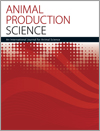
Animal Production Science
Volume 62 Number 15 2022
AN22061Competence to thrive: resilience as an indicator of positive health and positive welfare in animals
New phenotyping methods are revealing resilience of animals to fluctuations in their environment. Resilience describes normativity of physiological, behavioural and production performance irrespective of the actual production level and provides insight into the animal’s experience of its personal environment. An ability of the animal to realise its potential is built on inherited and acquired competences that confer environmental mastery. Competence to cope minimises harms. Competence to thrive recognised as resilience indicates eudaimonic wellbeing and supports positive health and positive welfare outcomes.
AN22061 Abstract | AN22061 Full Text | AN22061PDF (2.6 MB) Open Access Article
AN21362Effect of refeeding on growth performance, blood metabolites and physiological parameters of Dorper×Santa Ines lambs previously subjected to feed restriction
 and José A. Freitas
and José A. Freitas
After a period of low feed availability and limited growth rate, fast recovery of lamb bodyweight makes sheep production systems more efficient, sustainable and profitable. Compensatory growth is followed by several adaptations at metabolic and physiological levels, including accelerated protein metabolism, high respiratory rate and high body temperature. After lambs are subjected to moderate feed restriction relative to the maintenance requirements, an efficient compensatory growth response is obtained under feedlot conditions.
AN22047Effect of molasses on fermentation quality of wheat straw ensiled with perennial ryegrass
With increasing demand for animal products, natural pasture may not meet the requirements for rapid development of husbandry. We found that ensiling wheat straw with perennial ryegrass favourably affected fermentation quality, with optimum ratio 2:3, and that molasses (3–5%) further improved the fermentation quality of mixed ensilages. The work provides practical guidance for expanding forage sources and improving forage utilisation efficiency.
AN20274Lemongrass essential oil reduces Mombasa grass silage gas losses, fibre content and pH after aerobic exposure
 and Jozivaldo P. G. de Morais
and Jozivaldo P. G. de Morais
Ensiling is a common method to conserve excess forage; however, high fermentative losses during the ensiling process can reduce the nutritional value. Additives, such as essential oils, may be used to improve the fermentative profile, reduce fibre content and increase the stability of silage after aerobic exposure. In this experiment, we show that adding lemongrass essential oil can reduce gas losses and improve aerobic stability, without significant effects on total losses and nutritional value of silage.
AN21463An attempt of using public ambient temperature data in swine genetic evaluation for litter-size traits at birth in Japan†
Large-scale national genetic evaluation in Japan, where unique seasonality exists, is promising for efficiently improving sow lifetime productivity. We analysed litter-size traits at birth from a farm in Japan, together with off-farm ambient temperature measured at a nearby weather station, showing that using ambient temperature captured a large part of the phenotypic variability caused by seasonality. The results imply that public meteorological data are useful in developing better operational models for swine genetic evaluation in Japan.
Heat stress drives persistent negative effects on lactation in dairy cattle. The probability of heat stress in South Korea is gradually increasing. This study evaluated the impacts of heat stress on milk quality in South Korea. The findings suggest that Korean dairy farmers should build facilities that provide the optimal low and dry conditions needed for dairy cattle to cope with heat stress and mitigate its impact on milk quality.
Increasing mating weight or condition score improved the lambing potential of ewes significantly. We thought that sheep of the same weight, but in better condition, should have better potential reproduction, but condition score rarely explained additional variation than mating weight in young Merino and Border Leicester Merino ewes.
AN20143 Abstract | AN20143 Full Text | AN20143PDF (1.4 MB) Open Access Article
AN21415Cow-level factors associated with colostrum yield and quality of Holstein dairy cows
Colostrum feeding is vital for protecting against disease in the neonatal calf, and many factors affect colostrum quality. This study aimed to determine the cow-level factors associated with colostrum yield and quality in dairy cows. Overall, body condition score (BCS) change during the dry period and calving BCS had great effects on colostrum production and quality, and future research should focus on the effect of BCS change during the dry period on colostrum yield and quality.
AN21464Quantification of behavioural variation among sheep grazing on pasture using accelerometer sensors
 , H. Nguyen, D. Heydarian, R. Sohi
, H. Nguyen, D. Heydarian, R. Sohi  , S. Nikbin, C. J. Jenvey
, S. Nikbin, C. J. Jenvey  , E. Halliwell, E. N. Ponnampalam
, E. Halliwell, E. N. Ponnampalam  , A. Desai, M. Jois
, A. Desai, M. Jois  and M. J. Stear
and M. J. Stear 
This research quantifies the variation among sheep, with respect to the times spent grazing, ruminating, idling, walking and licking using an accelerometer. Variation in activity among sheep is of biological and statistical interest. This result enhances our understanding of sheep behaviours and allows for appropriate and meaningful statistical analyses in future experiments.
AN21464 Abstract | AN21464 Full Text | AN21464PDF (3 MB) | AN21464Supplementary Material (3.3 MB) Open Access Article



